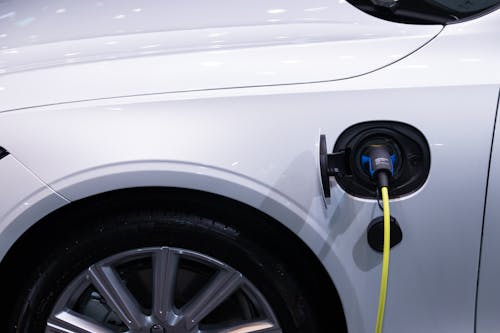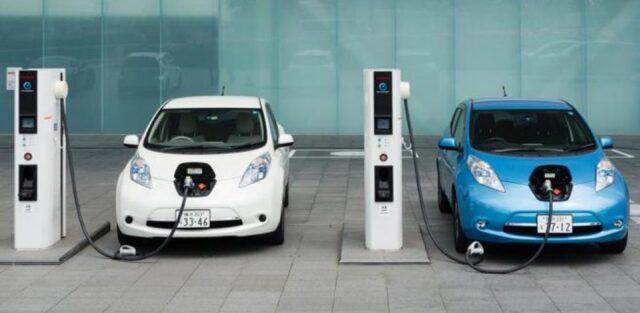
Image Source: Pexels
As the world progresses towards a cleaner and greener future, the popularity of electric vehicles (EVs) is on the rise. Electric vehicles are becoming increasingly common on our roads, but there is still a lot of confusion surrounding them. In this article, I aim to demystify electric vehicles and explain what they are, how they work, and why they are important.
Introduction to Electric Vehicles (EVs)
Electric vehicles are automobiles that are powered by electric motors, rather than gasoline or diesel engines. These motors are powered by rechargeable batteries, which are charged by plugging the vehicle into an electric power source. EVs have been around for more than a century, but recent advancements in battery technology and charging infrastructure have made them a more practical and affordable option for everyday use.
Electric vehicles come in a variety of shapes and sizes, from small, compact cars to large, luxury SUVs. They are also available in different types, including battery electric vehicles (BEVs) and plug-in hybrid electric vehicles (PHEVs).
How do Electric Vehicles Work?
Electric vehicles work by using an electric motor to power the wheels, instead of an internal combustion engine. The motor is powered by a battery pack, which is made up of a series of rechargeable cells. These cells store the energy that is used to power the motor and propel the vehicle forward.
When you plug your EV into an electric power source, the battery pack begins to charge. The charging process can take anywhere from a few minutes to several hours, depending on the size of the battery and the speed of the charging station. Once the battery is fully charged, the vehicle is ready to drive.
One of the most significant advantages of electric vehicles is that they produce zero tailpipe emissions. This means that they do not emit any harmful pollutants into the air, making them a cleaner and more environmentally-friendly alternative to traditional gasoline or diesel-powered vehicles.
Benefits of Electric Vehicles
Electric vehicles offer a range of benefits over traditional gasoline or diesel-powered vehicles. One of the most significant advantages is that they produce zero emissions, which means they are better for the environment. They also offer lower operating costs, as they are cheaper to fuel and require less maintenance than traditional vehicles.
Another advantage of electric vehicles is that they offer a smoother and quieter ride than traditional vehicles. Electric motors provide instant torque, which means that they can accelerate quickly and smoothly. This makes them ideal for city driving, where stop-and-go traffic is common.
Types of Electric Vehicles
There are two main types of electric vehicles: battery electric vehicles (BEVs) and plug-in hybrid electric vehicles (PHEVs).
Battery electric vehicles are powered entirely by electricity and do not have a gasoline engine. They rely solely on their battery packs to power the electric motor and propel the vehicle forward. BEVs are generally more expensive than PHEVs, but they offer greater driving range and produce zero emissions.
Plug-in hybrid electric vehicles, on the other hand, have both an electric motor and a gasoline engine. They can operate in electric-only mode, using the battery pack to power the electric motor, or in hybrid mode, using both the electric motor and gasoline engine to power the vehicle. PHEVs are generally less expensive than BEVs, but they produce emissions when running on gasoline.
Electric Vehicle Charging Infrastructure
One of the biggest concerns for people considering an electric vehicle is the availability of charging infrastructure. However, the number of public charging stations is growing rapidly, and most EV drivers charge their vehicles at home.
There are three main types of EV charging stations: Level 1, Level 2, and DC fast charging. Level 1 charging uses a standard household outlet and can take up to 24 hours to fully charge an EV. Level 2 charging uses a dedicated charging station and can fully charge an EV in 4-8 hours. DC fast charging is the fastest option and can charge an EV in 30 minutes or less.
Common Misconceptions About Electric Vehicles
There are several common misconceptions about electric vehicles that may be preventing people from considering them as a viable option. One of the most significant misconceptions is that they are not practical for long-distance driving. However, most modern electric vehicles have a driving range of 200-300 miles, which is more than enough for most people’s daily driving needs.
Another misconception is that electric vehicles are not as safe as traditional vehicles. However, EVs must meet the same safety standards as traditional vehicles, and many models have received top safety ratings.
The Future of Electric Vehicles
The future of electric vehicles is bright, as more and more automakers are investing in EV technology. The demand for EVs is also increasing, driven by a growing concern for the environment and a desire for cleaner, more sustainable transportation options.
As battery technology continues to improve, the driving range of EVs will increase, making them an even more practical option for everyday use. Additionally, the cost of EVs is expected to decrease as production volumes increase, making them more affordable for the average consumer.
Electric Vehicle Incentives and Government Support
Many governments around the world are offering incentives and support for electric vehicle adoption. In the United States, for example, there is a federal tax credit of up to $7,500 for the purchase of a new electric vehicle. Several states also offer additional incentives, such as rebates and tax credits.
In addition to government incentives, many utility companies are offering special rates and rebates for EV owners, making it more affordable to charge their vehicles at home.
Cost Considerations of Electric Vehicles
While electric vehicles have a higher upfront cost than traditional vehicles, they offer lower operating costs over the life of the vehicle. EVs are cheaper to fuel than gasoline or diesel vehicles and require less maintenance, as they have fewer moving parts. Additionally, electric vehicles are eligible for government incentives and may qualify for lower insurance rates.
Conclusion
Electric vehicles are becoming an increasingly popular alternative to traditional gasoline or diesel-powered vehicles. They offer a range of benefits, including zero emissions, lower operating costs, and a smoother, quieter ride. While there are still some misconceptions and concerns surrounding electric vehicles, the future looks bright for this clean and sustainable transportation option.
If you’re considering an electric vehicle, take the time to research the different options and charging infrastructure available in your area. With government incentives and support, and a growing number of charging stations, electric vehicles are becoming a more practical and affordable option for everyday use.






